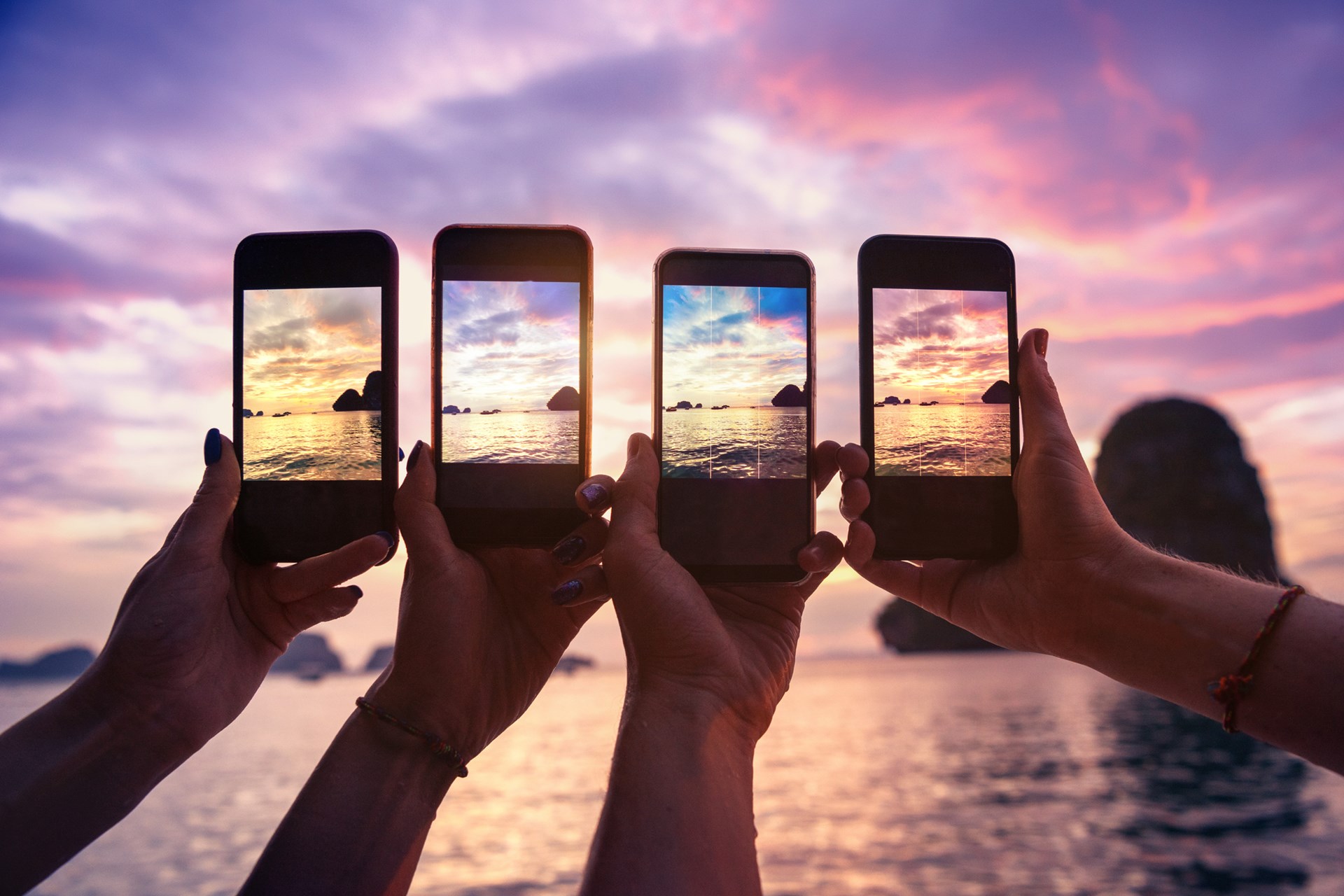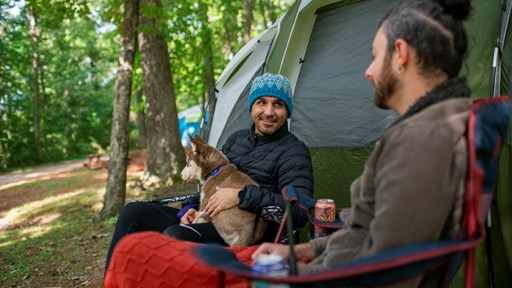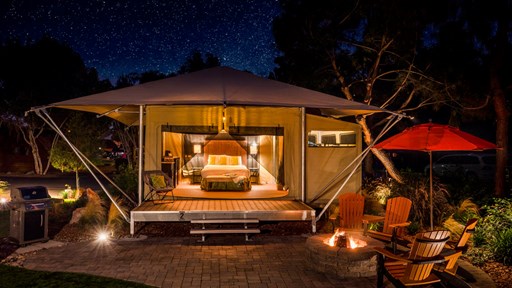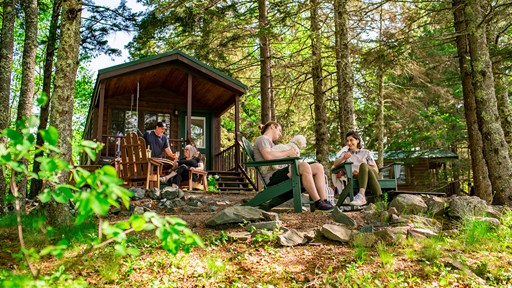It’s incredible to think of everything a smartphone can do … and the fact that it does most of those things quite well! These days it’s tough to find anyone who doesn’t keep that slim, small rectangle of a device at their fingertips. Sure, we use it to text and call family and friends, but smartphones also do so, so much more.
Our phones have also become our go-to for media and entertainment; they keep our social calendar and provide work access. We use them for leisurely reading, a handy flashlight, research, shopping, and of course, to take pictures!
If you think about it, today’s “phone” is the most advanced multi-tool out there … and perhaps no group loves a good space-saving, multitasking tool more than campers and travelers.
Maybe secondary to using our smartphones for communication is the way we use smartphones as our go-to camera. Technology has come such a long way that pictures snapped with a smartphone can look nearly professional. This takes some practice, though.
Contrary to popular belief, the quality of your pictures isn’t all about having the latest device. The secret’s often in the details of the shot and the technique of the user. That is, it’s all about things like lighting, angles, and shot composition. And yes, some filter options, apps, and settings don’t hurt, either.
Another huge benefit of taking great travel pics via smartphone is their digital nature. The ability to easily edit and then share pics socially, on social sites like Instagram, Facebook, personal blogs, and/or websites makes photo sharing a snap when you’re on the road or nestled inside a tent or RV.
Smartphones have become a great photography option for serious and amateur photographers alike. Technology has come such a long way that images captured with smartphones are better and more refined than they’ve ever been. And it’s easier than ever to take a great pic. That said, there are lots of tips out there to help all levels of photographers improve their skills, so they can return from the next trip with interesting and memorable shots.
Take a look at the following tips to learn how to take better travel photos with your phone, and try some of these out next time you go exploring.
Use These Tips to Take the Best Travel Photos with Your Phone
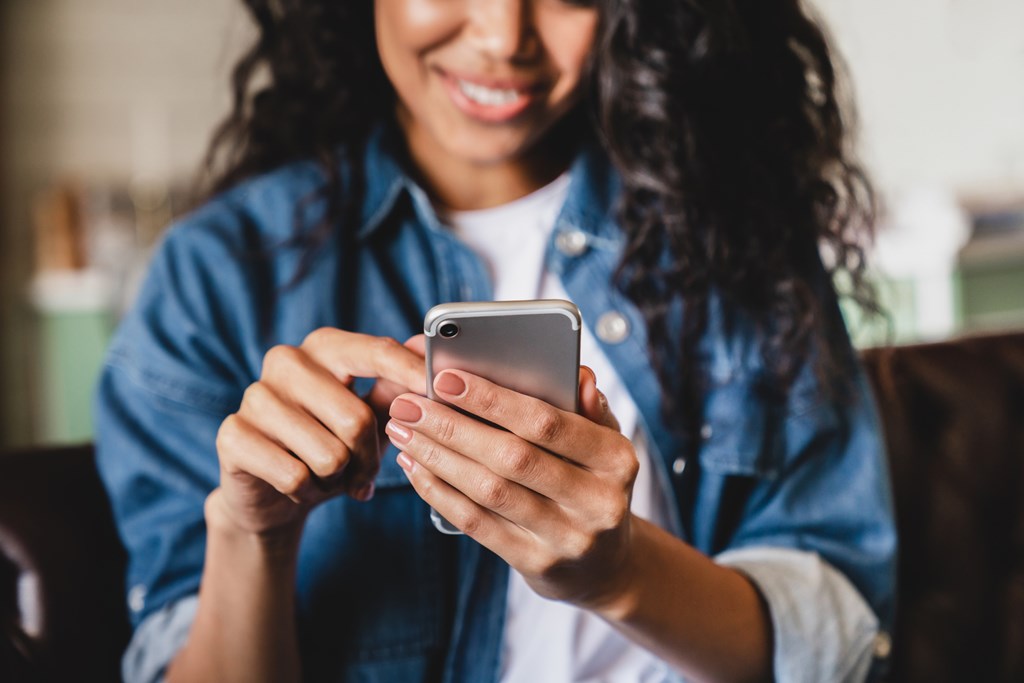
1. Get reacquainted with your phone before you travel
Sometimes in day-to-day life, we get into a bit of a malaise. Well, the same can be said about how we use our phones. Often when taking pictures of life and loved ones, we’ll point and click and maybe use the portrait feature for shots of people.
Perhaps a no-brainer, but practice taking photos with your phone before you go on your trip. Whether you’ve had your phone for three months or three years, take time to explore your phone’s filters, install any updates, and try some new techniques on familiar subjects and locations. You may find, for example, that while portrait mode makes some ‘headshots’ look polished, it’s not so great when subjects are too near or too far or when the lighting is too low.
Before diving into “the goods,” let’s get some of the very basic starting rules of phone photography out of the way…
Furthermore, always have your charging cord nearby. Slow down and think about the shot. Invest in a good editing app or two.
While the zoom function is a helpful feature and as easy as a backward pinch, it’s not the best way to land a great photo. If possible, get as physically close to your subject as possible to avoid a grainy, blah image. (Now, if you’re touring the Everglades, you might want to consider that advice carefully.)
Finally, and perhaps easiest and most basic of all, don’t forget to wipe off the lens.
The point is, explore your phone’s camera with fresh eyes. Experiment with subjects in and around your home. Practice some of the techniques below that pertain to angles and staging.
All of these techniques will soon be second nature when you’re hiking fabulous trails and exploring new cities, and you won’t have to overthink the workings of your camera mid-hike.
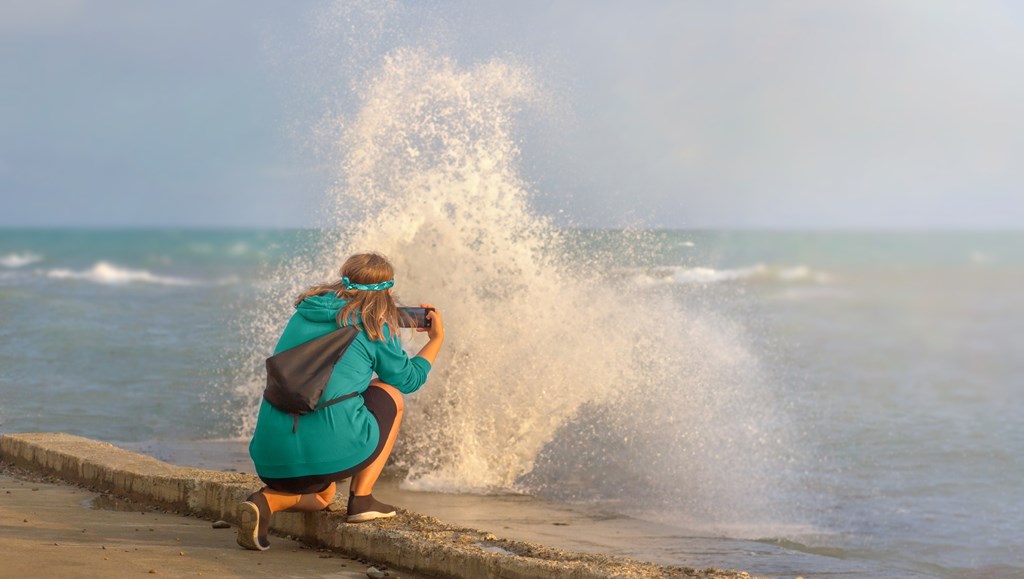
2. Work the angles with your cell phone photography
When it comes to taking a great photo, angles matter. Perhaps you’ve heard about the 45-degree angle, also known as the UFA (Universally Flattering Angle). Lots of people, from photographers to models, magazine editors, and celebrities, know this little trick of positioning themselves or others at a 45-degree angle for a more flattering and photogenic shot.
That’s positioning people. How you position your phone/camera can also make a huge difference in taking a picture from “ok” to “wow.”
The angle from which we see the subject of a picture makes us think about that subject in different ways. Even a very slight tilt of the camera can make a huge difference in the overall image.
Rachel, a traveler and professional food photographer at Two Loves Studios, argues that while 45-degree angles may flatter people, it’s not always the best angle to use with a smartphone, especially shooting stationary objects like food. Instead, she says, the lens on an iPhone mimics a wide-angle lens, and thus to avoid distortion, better angles to use would be overhead or straight-on.
The most important thing is to experiment with different angles. Snap pics of people, food, and landscapes, and while you do it, try placing your camera overhead, eye level, tilted up, and tilted down. Notice how it changes the subject and composition of your photo.
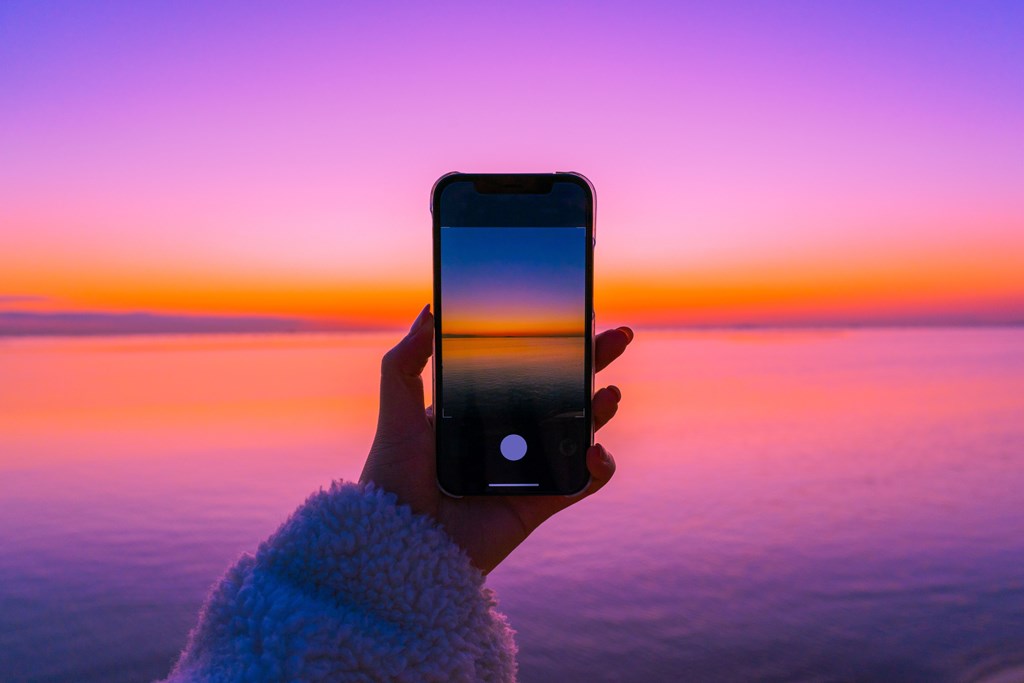
3. Play around with shadow and light
It’s so fun to practice photography when traveling, as many trip adventures are outdoors! Natural light is the best light for people and places, and it can be really interesting to experiment with light in different locations, weather, and times of year.
For example, a cloudy day can provide lovely, extremely flattering pictures as the clouds are diffusing the sun’s bright rays and casting softer light onto the subject. People don’t need to squint or dodge shadows and glares on an overcast day. The soft light of the cloud filter can smooth out skin and make architecture come to life.
Sunny days can be a bit more challenging for photographers, but a picture with sun-soaked swimmers or palm trees casting shadows can convey the warmth of a place like nothing else.
Finally, don’t forget the power of a good sunrise and/or sunset. In the early morning hours or the end of the day, you’ll observe the intricate shadows falling on the ground and the gorgeous colors in the sky. Mobile phones typically have built-in HDR, which allows them to exquisitely capture all the different colors of the sky and landscape at these times of the day.
4. Study the rule of thirds
To make a picture more interesting, think about how to arrange the subject within the shot. The Rule of Thirds has been a guiding principle for artists working on compositions for a very long time. It is also an essential photography technique that adds interest and depth to photos.
The idea of the Rule of Thirds is this: Rather than having the subject dead-center of the image, arrange the shot so the subject is in the left or right “third” of the image. A cool tip for smartphone photographers is that your phone’s camera probably has ‘Rule of Third’ gridlines that you can overlay when taking a photo. This will help you to place your subject at the ideal gridlines for a stunning shot.
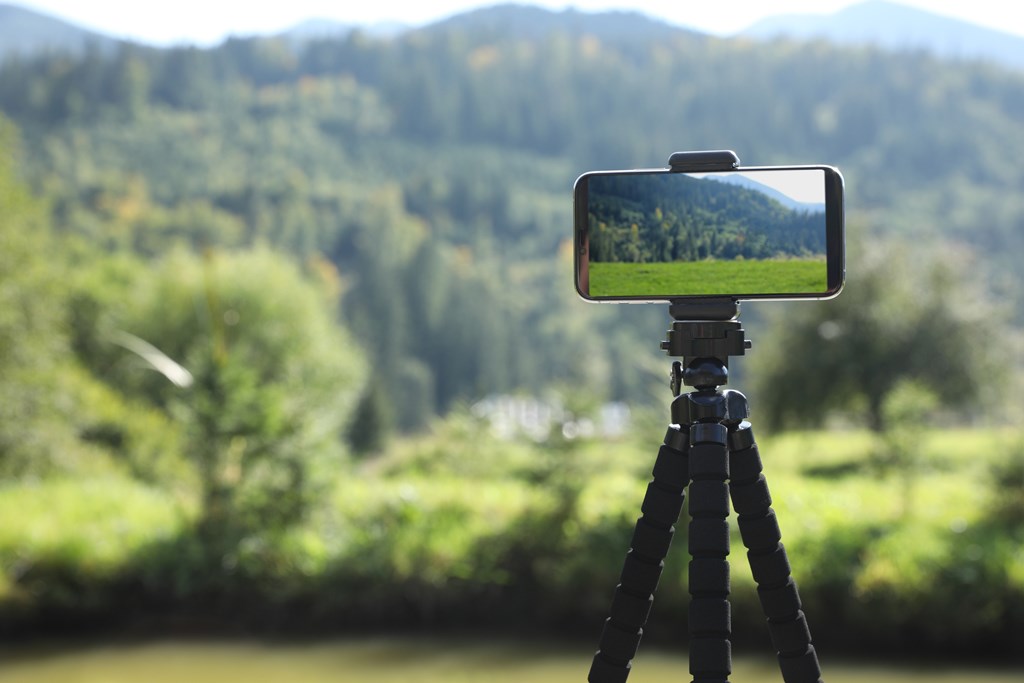
5. Consider a smartphone tripod
Many smartphone photographers swear by the versatility and usefulness of a smartphone tripod to help them do more with their pictures and ultimately get those one-of-a-kind shots. So, is it worth the extra weight in the suitcase? Let’s dig into some of the pros and cons.
The main difference between a smartphone tripod and a traditional camera tripod for DSLR (digital single-lens reflex camera) is that DSLR tripods tend to be bigger and heavier to support the weight of a larger camera and lens(es). The function remains the same.
Most smartphone tripods have three adjustable, collapsible legs, similar to traditional tripods. Some phone tripods are ultra-lightweight and compact, with rubberized, collapsible legs which adjust and fold in various ways, even around branches and poles. Finally, tabletop tripods are very packable but not as sturdy as the other two.
Tripods are ideal when it comes to capturing long-exposure shots, night shots, or low-light photos, which require slow shutter speeds and a still hand. They’re also great for panoramic photos, like dramatic mountain ranges or sweeping beaches, and time-lapse images.
Finally, a tripod’s steady, sweeping range of movement is up to the task of capturing fast-moving objects, kids, and animals. If you want to immortalize your kids frolicking in a wildflower field or document yourself resting midway through a solo hike (simply use the timed photo function), a tripod might be the right tool for the job.

6. Explore water photography
Water always adds an amazing element to any photograph. Picture images you’ve seen with subjects in rain, streams, splashy puddles, frothing ocean, or azure-blue pools. They’re dynamic, right? Water, in its many forms, gives us so many amazing textures, colors, movements, and shapes to consider.
Indeed, water and phones don’t always mix. It can be dicey to hover over a fishing stream with a smartphone. The good news is there are lots of inexpensive waterproof phone cases on the market now that can provide a little peace of mind on a kayak trip or wet photography session. Some waterproof phone cases can even go underwater for a long duration of time!
Often the best times to shoot water are at sunrise and sunset. Again, this has to do with the qualities of natural light. The “magic hour” will help you find the best light to capture the reflective nature of a still lake, pond, or puddle. (Pro tip: shooting very early or very late in the day also helps to avoid crowds and other people).
Another tip for shooting water is to use different shutter speeds. You can find apps to help control shutter speeds for both iPhones and Androids. A slow shutter speed will help water to appear silky or mist-like, whereas a fast shutter speed will capture tiny droplets of water in the air or the detail of waves crashing on a beach.
So when you’re on the road and snapping pics, why not find the nearest body of water? Get on the boat, the pier, dive into the water, or dash out in the rain. Bring your camera along for the ride and see what happens.
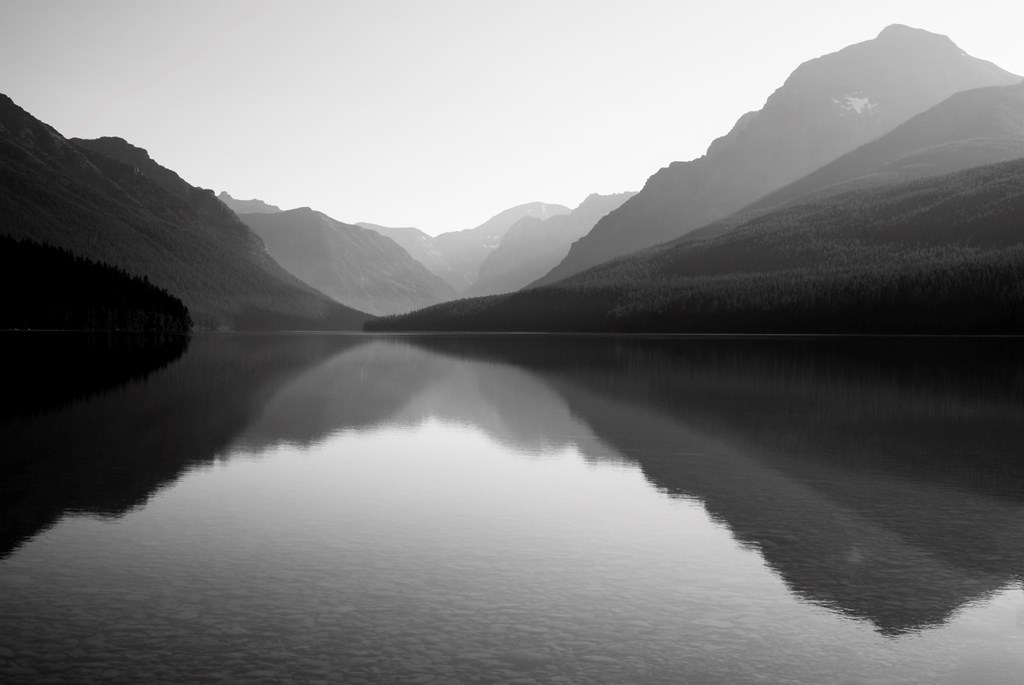
7. Try some black and white photos
Black-and-white photos can conjure feelings of nostalgia and timelessness. Artistically, black and white can also magnify incredible textures, like those found in a wooded area, sunlight peeking through tree leaves and splashing onto rocks.
Many phones have a handful of black-and-white filters. You can play with these and see which are too dark, too light, or just right for a particular photograph. You can also adjust each filter to fine-tune its appearance.
So how do you know when to go black and white, and how do you edit photos to look their best in black and white? It almost seems like making black-and-white pictures in a colorful world from a colorful experience is akin to scaling back or taking something away. But the truth is, black and white tones can add so much to an image.
Black and white photos emphasize the light (and shadow) and how it falls. The light becomes another subject of the photo (if not “the” subject).
Black and white imagery also forces us to focus on texture visually. Think of the textures of a forest, beach, or city beneath a clouded sky. Black and white photos can make us feel in a way that a standard, color photo cannot.
One tip for identifying and making black-and-white photos is to consider contrast. High contrast or low contrast is usually a personal aesthetic choice but will affect the image immensely.
For black-and-white photography inspiration, it’s tough to top Ansel Adams, considered to be one of the best black and what photographers of all time.
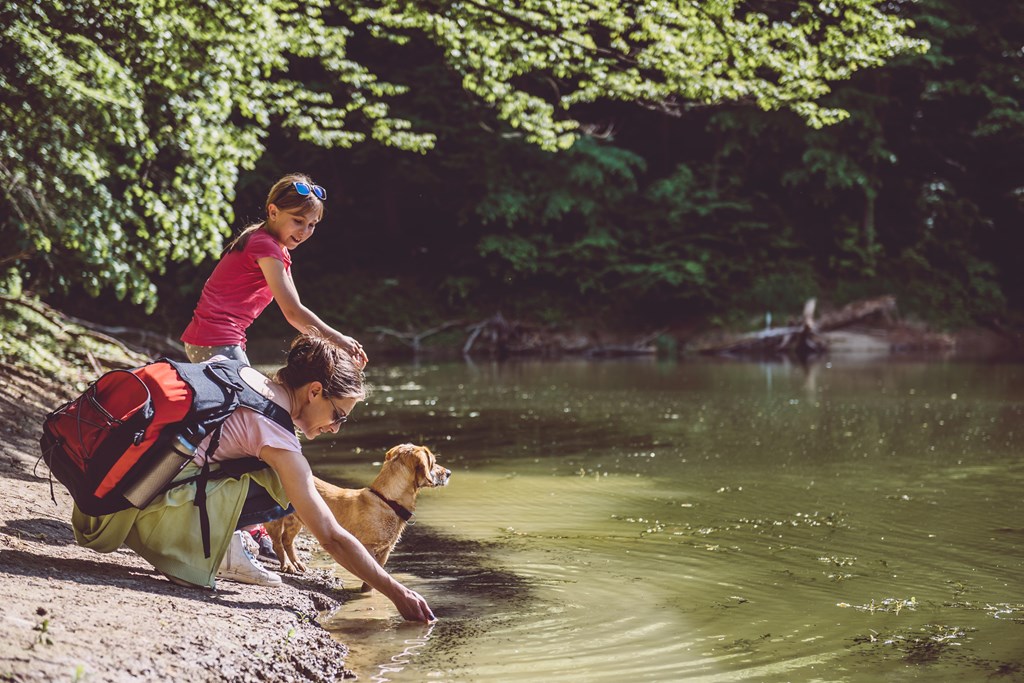
8. Get candid with your photography
For next-level trip and travel images, resist the urge to say “cheese.” That is, take more candids of loved ones and of yourself! (Remember the smartphone tripod that we mentioned earlier?)
Candid photographers see and evaluate each scene and the surroundings of that scene. They are looking for moments and emotions. Candids are not posed, and so some photographers swear by taking lots of pictures rapid-fire or shooting in Burst Mode, so they have multiple stills to choose from. (With most phone cameras, holding down the shoot button will enable burst, which is helpful when photographing any fast action or moving objects).
If your photo-taking is a distraction to the subject of your photos, you can try placing your camera at a discreet location, like your hip. Or you can pretend to take a picture of something in the ‘beyond.’
Ditch the flash for candid photos. Let your guard down and be part of the fun with your family and friends, and they’ll be more likely to let their guard down with you.
Taking candids is not about hiding in the bushes, waiting for a photo-worthy moment. It’s about capturing people in their natural, non-posed state. It’s about capturing action, real emotion, and the interplay between subjects. There are some interesting photography techniques you can use for taking candid photos, or in other words, for capturing life in the moment.
9. Invest in a fabulous filter
Ever wonder why the photos of professional bloggers look so incredible? It’s not chance or even a ton of skill. There are a lot of filters out there that can make regular pictures look a touch more polished or artsy. These photo filters are popular with bloggers, Instagram pros, or anyone who loves a good photo or good-looking aesthetic.
Phones come preloaded with filters, but you can add to the mix with countless other filter options, some of which are free. If you’re sharing your trip on a digital platform like Instagram or a website, the right filters can pull the entire look together. Some filters have animation as well, which makes social media posts more fun and dynamic.
A final word on phone photography …
When it comes to practicing photography using your smartphone, there’s no right or wrong way to go about it. The important thing is to get out there, practice, and experiment! Today’s compact smartphones are workhorses. And they are a huge asset to travelers and adventurers, especially when we can take, edit, and share fantastic travel pics! With a little practice and patience, you can preserve the memories from your next adventure with some incredible photographs captured by that “old faithful” multitool — your phone.
So get snapping. And don’t forget to print a picture or two when you get back home.

Leslie, a.k.a. Copy Girl, is a copywriter who gets butterflies from telling stories through words.
Her voice comes from a place filled with passion, dreams, and lots of sugar. “Cake over steak” is her go-to motto.
With over 10 years of experience in crafting words, and years of embarking on travels that have taken this Montana girl to some incredible places, Leslie love the adventures of both body and mind her writing takes her on.
Everywhere she goes, she takes this advice with her:
“Hold on to your divine blush, your innate rosy magic, or end up brown.” – Tom Robbins, Jitterbug Perfume
To see what Leslie’s up to in the writing world, visit her website here.



















